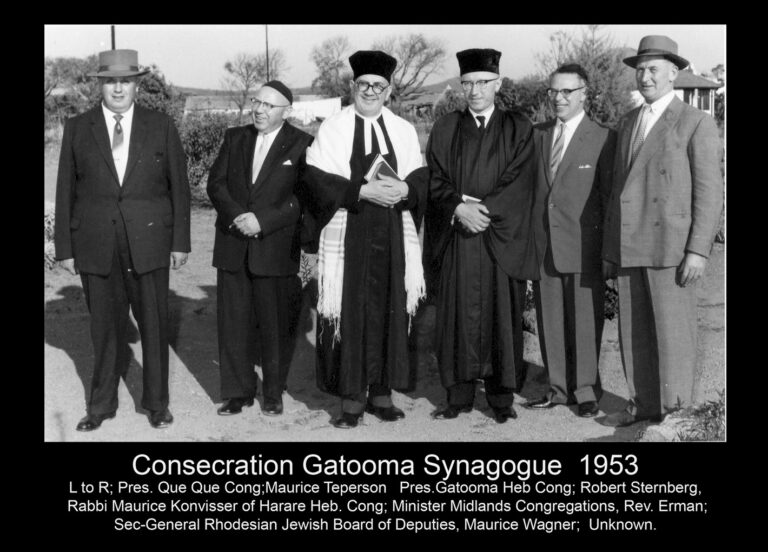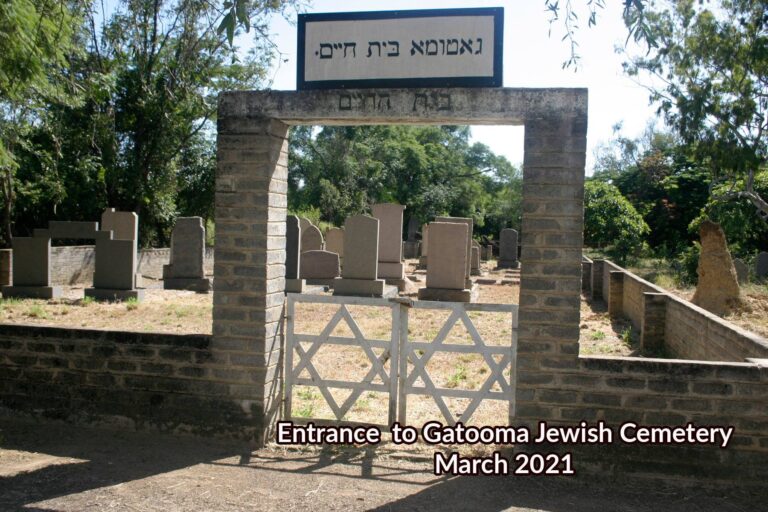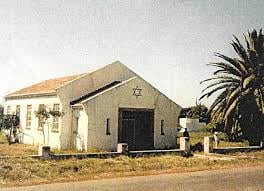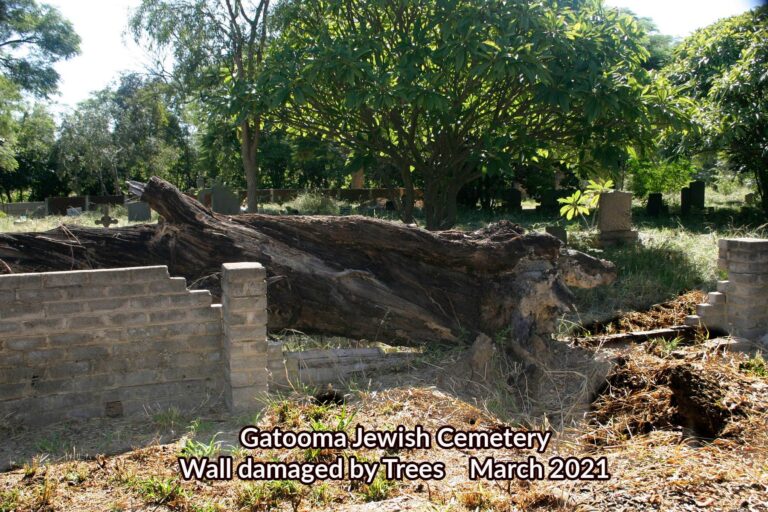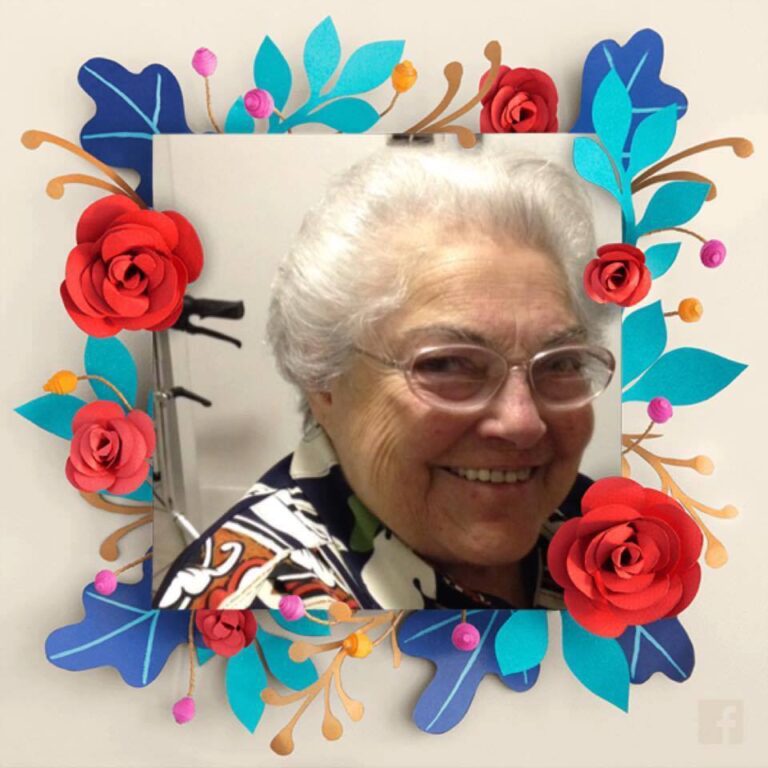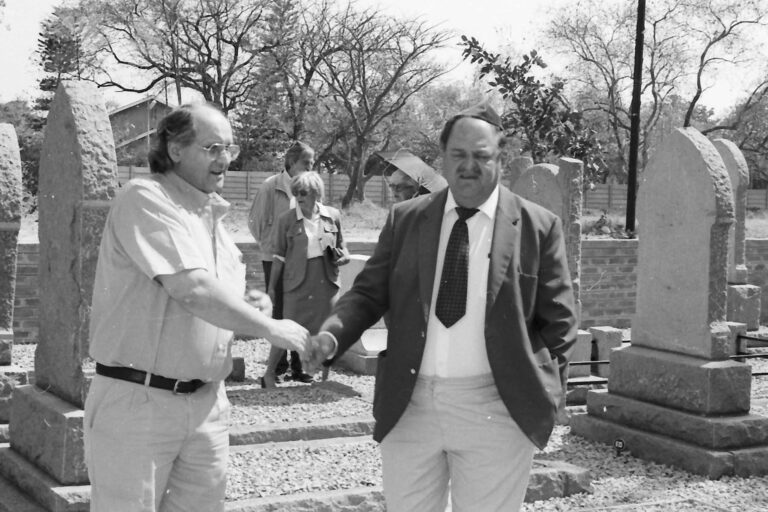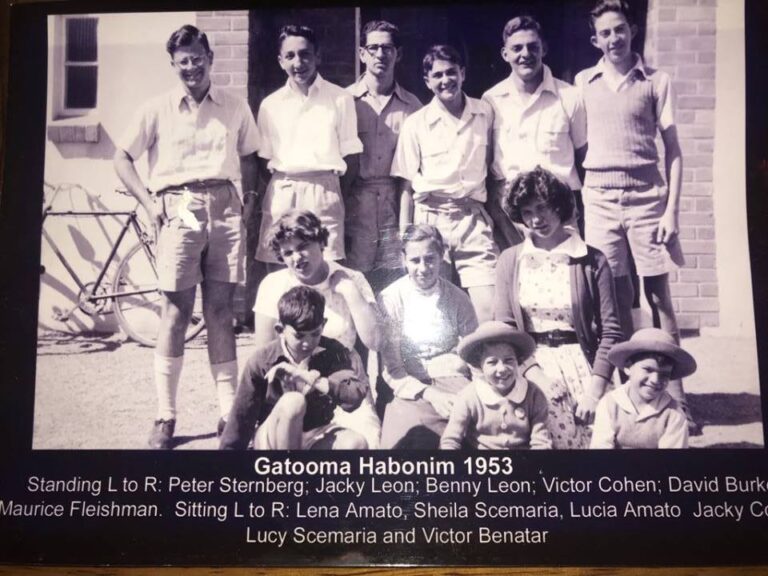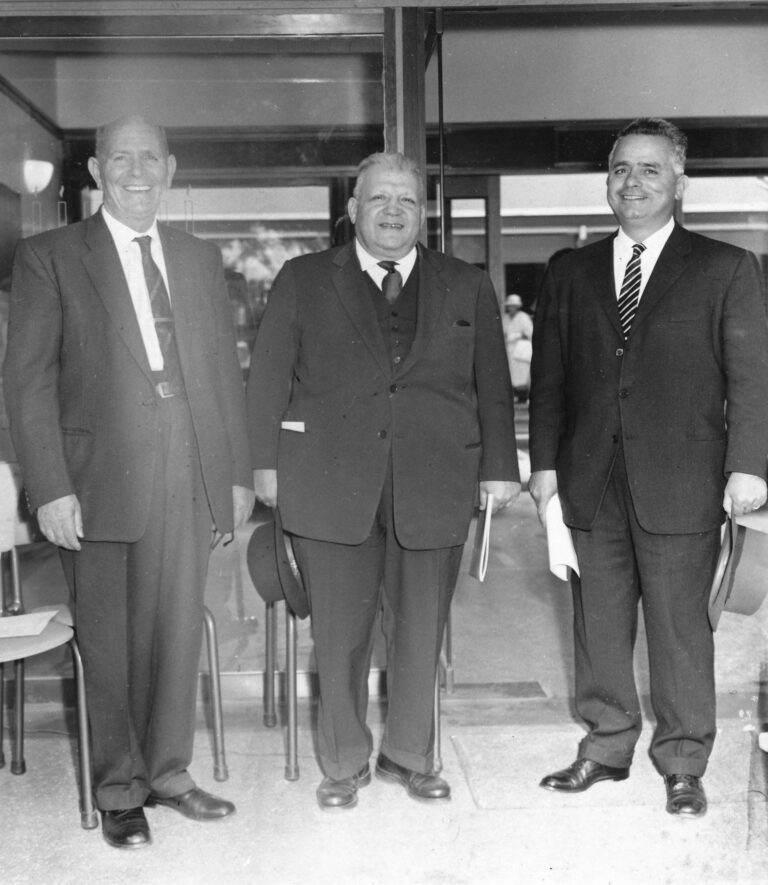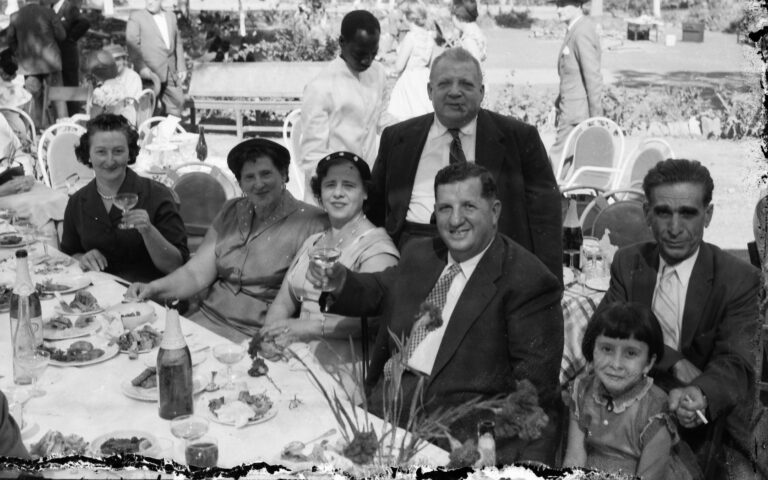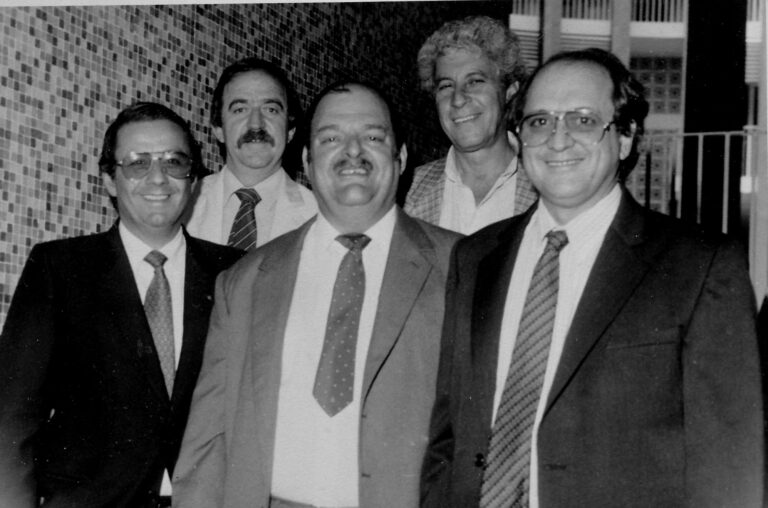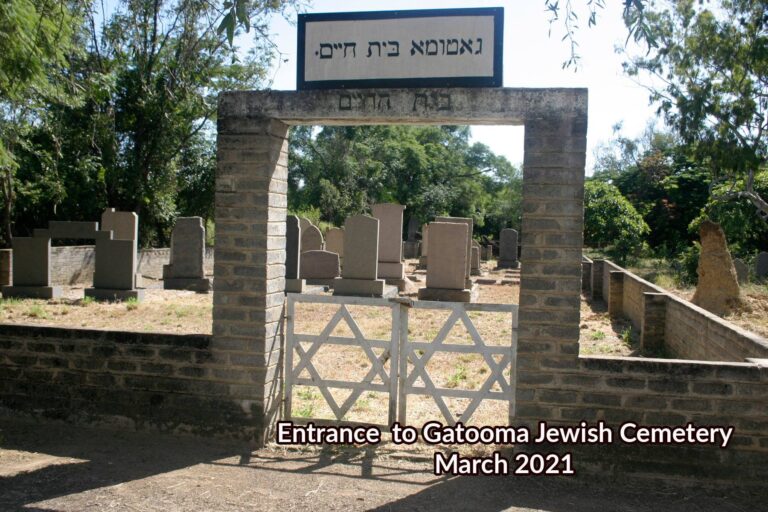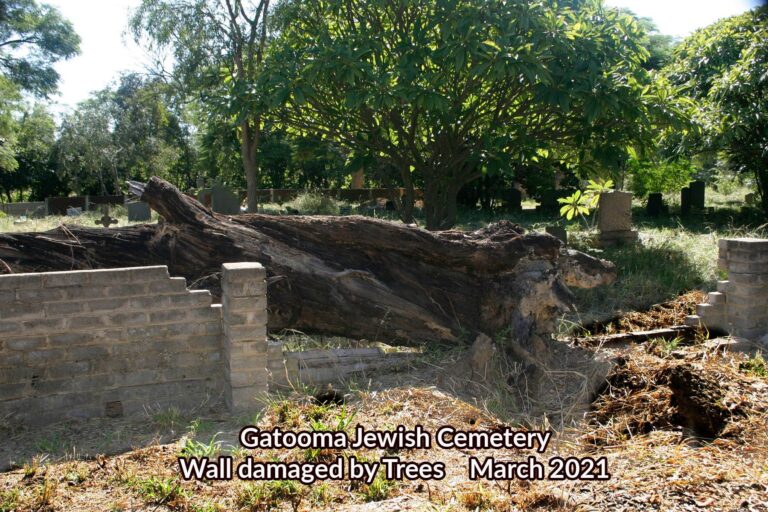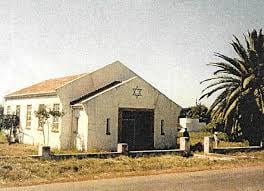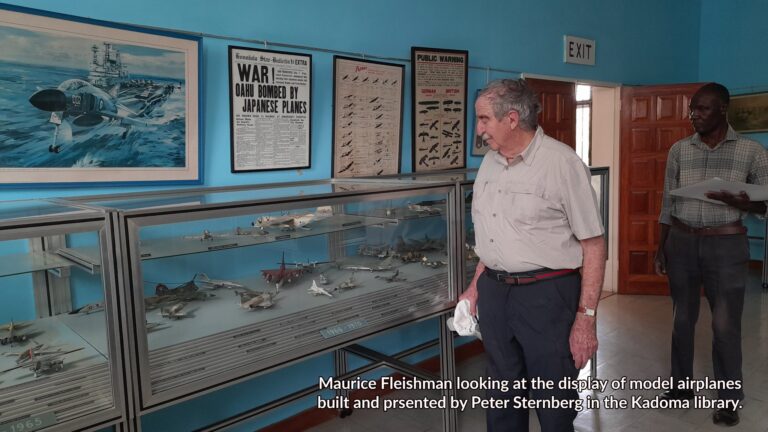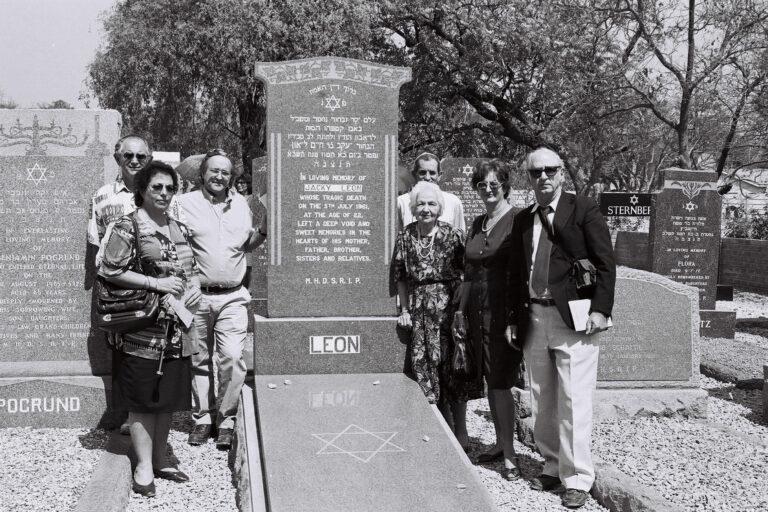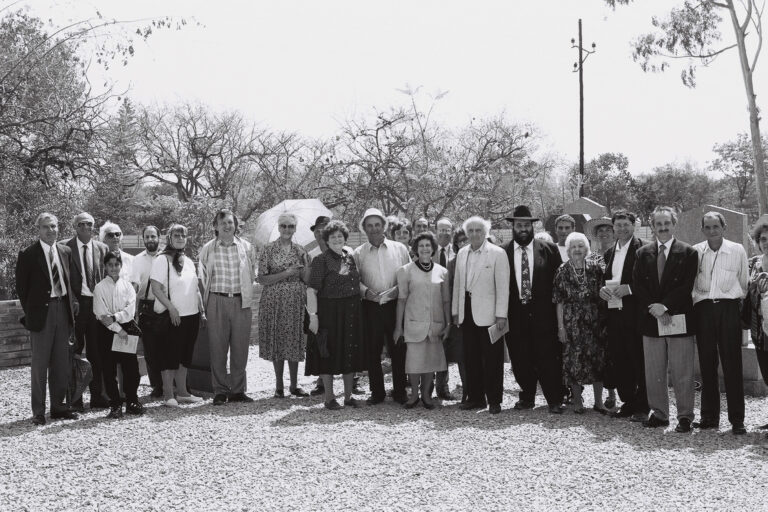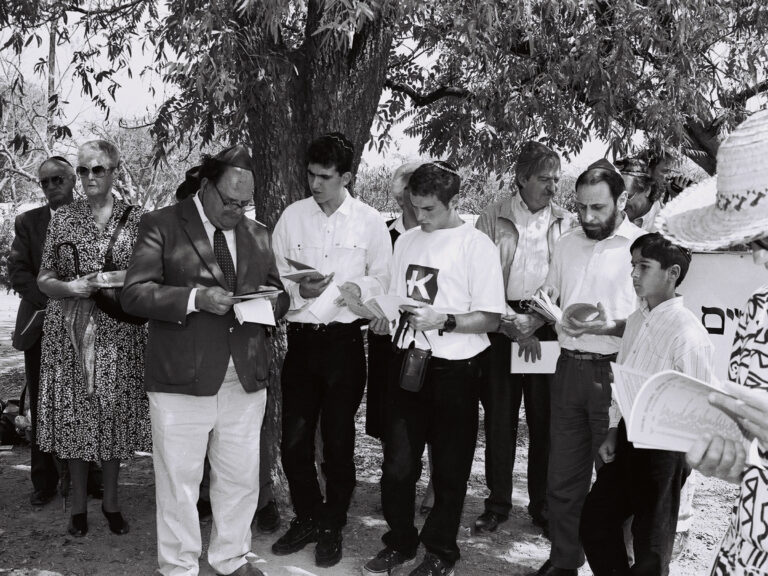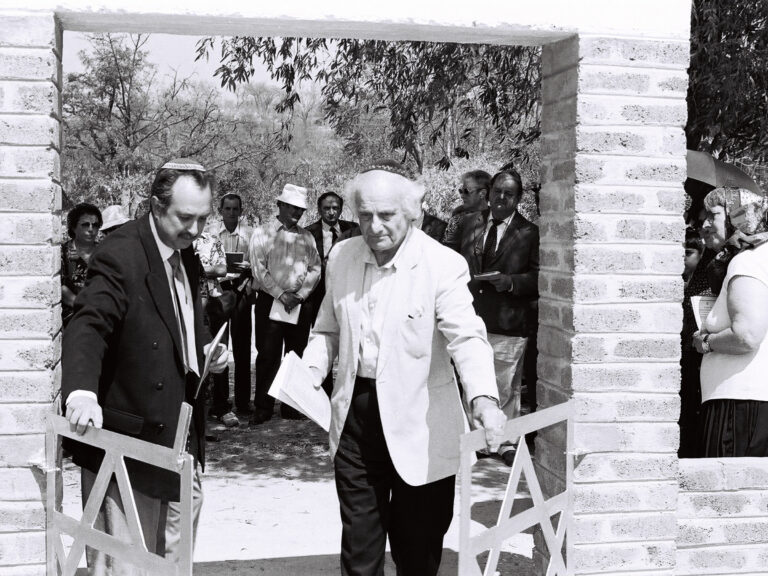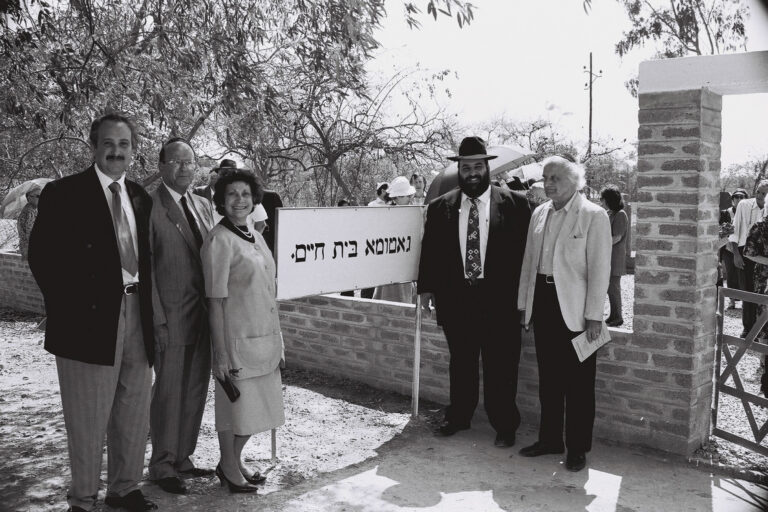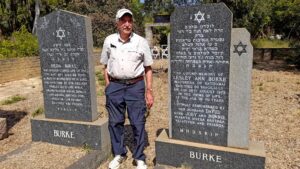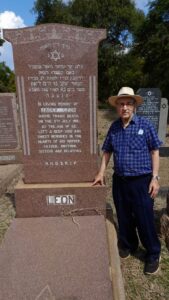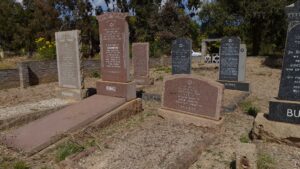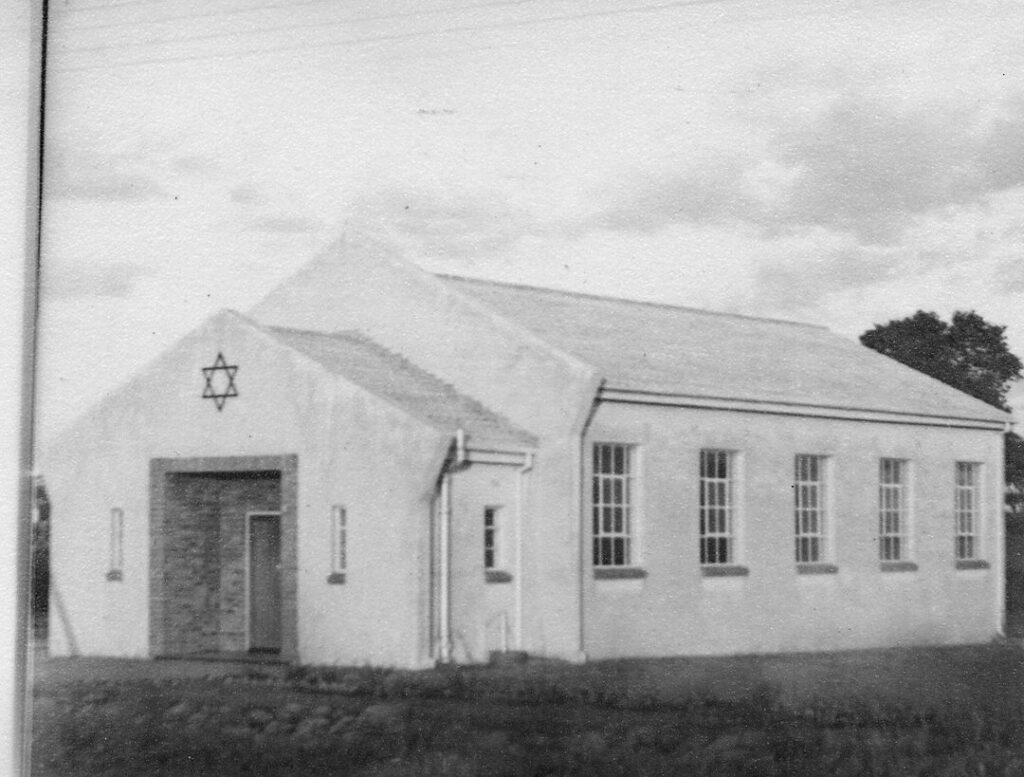
May 2022 – Maurice Fleishman and I visited Gatooma/Kadoma last week. WE are the only two people left who at one time lived in Gatooma. WE visited the homes we lived and and as children played together. WE then visited the Gatooma Jewish Cemetery and visited graves of relatives and friends. The cemetery is still well kept although there is the seasonal growth of grass and shrubs. THis being maintained by John Kinnaird. In the Kadoma library we saw the display of World War Two model airplanes donated by Peter Sternberg. I deposited some photographs and memorabilia in the museum section of the library
Kadoma Jewish Community
This page is dedicated to the small Jewish community of Kadoma (formerly Gatooma) which existed for some 50 years from the 1930s through to early 1980s. With grateful thanks to Benn Leon for many of the images provided here.
(Other source: Harare Hebrew Congregation – Centenary Magazine – published 1995)
For some unique video footage of the Kadoma Jewish Community – see below. To view the Kadoma Jewish Cemetery.
In the early 1900s Jews began to settle in and around Gatooma (Kadoma), and over the years more families took up residence until by the late 1930s, there were about 25 to 30 families in Gatooma, Eiffel Flats and surrounding districts. No congregation had been formed, but laymen conducted services over the High Festivals in private homes. In 1939, Rosh Hashanah and Yom Kippur services were conducted by a recently arrived refugee from Nazi Germany, Mr Robert Stemberg, who worked for Mr B. S. Leon, a prominent businessman. In August, 1944, the Rev. Dr Levin, Minister of the Bulawayo Congregation, addressed a gathering at the Women’s Institute resulting in the formation of the Gatooma Hebrew Congregation.
A provisional committee was set up under the chairmanship of Mr M P Vallentine with Mr Stemberg as honorary secretary. Other committee members were Sam Hasson, Jack Hasson, Solomon Chimowitz and Israel Braude.
A service to commemorate the fifth anniversary of the outbreak of World War II was conducted by Mr Stemberg at the Royalty Cinema, owned by Mr Joseph Burke, who also owned the town’s only newspaper; and in 1945, the Gatooma Congregation was finally created, the president being Mr Vallentine, secretary Mr Stemberg, and a committee including Messrs M Franco, Ezra Hasson, Jack Hasson and Israel Braude.
A new Ark was built and services were now being held on all festivals using such venues as the Women’s Institute Hall, the old Dutch Reformed church hall and private homes. In January 1948, the late Rev. M Yesorsky of Bulawayo together with the President of the Que Que Hebrew Congregation discussed the necessity for Jewish education and Mr Stemberg started Hebrew lessons.
In 1950, the Chief Rabbi of the British Empire, the Very Rev. Israel Brodie, came to Southern Rhodesia and the municipality gave a civic luncheon at Specks Hotel in his honour. At the reception, the Chief Rabbi appealed for the building of a synagogue and numerous pledges were made.
The synagogue was consecrated in 1953 with all three Southern Rhodesian Rabbis taking part in the service—Rabbi Konviser, Rabbi Yesorsky and Rabbi Papo.
In 1956, the first Jewish Mayoral Service ever held in Gatooma took place when Mr Stemberg became the first Jewish Mayor. Rabbi Konviser conducted the service with the Salisbury Synagogue Choir.
The video clips below were taken by the late Siggi Weber z”l who was an avid photographer and these images provide unique visual records of the Kadoma community from the 1950s including the opening of the small Synagogue in that town in 1953. We thank his daughter Sophie Codron for providing this material.
Lilo Weber (ex Kadoma/Gatooma) passed away on Monday 12th June 2017. Lilo and her husband Sigi were well known in the Jewish community of their home town as well as in Bulawayo and Harare. This picture on the left shows Lilo at her 90th birthday in February 2017. We send our heartfelt condolences to Sophie Weber Codron , brother David, six grandchildren and sixteen great grandchildren. יהי זכרה ברוך
Most of the images on the left are from Benny Leon for whom we are forever grateful.
The following with courtesy from Prof. Jay Waronker who has done an extensive project to recording African Synagogues. See https://www.africansynagogues.org/index.html
In the early 1900s, a handful of Jews began to settle in and around Kadoma, called Gatooma at the time, and over the years more families took up residence there. By the late 1930s, there were about twenty five to thirty families living in and around this small Midlands Region city. During this period, no congregation had been formed, but laymen conducted prayers over the High Holidays in private homes and temporary facilities. A Jewish cemetery was also established in Kadoma.
In 1939, Rosh Hashanah and Yom Kippur services were conducted by a recently-arrived refugee from Nazi Germany, Mr. Robert Sternberg. Mr. Sternberg and his son Peter and family would continue to be active in the synagogue for years to come.
In August, 1944, the Rev. Dr. Levin, Minister of the Bulawayo Congregation, addressed a gathering of Jews at the Women’s Institute that resulted in the formation of the Gatooma Hebrew Congregation. A provisional synagogue was established in 1944, and by the next year the Gatooma Congregation was created.
An ark was built and services were held on all festivals using such venues as the Women’s Institute Hall, the Dutch Reformed Church hall, and private homes. In January 1948, the Rev. M. Yesorky of Bulawayo with the president of the Kweke Hebrew Congregation discussed the need for Jewish education, and soon thereafter Hebrew classes began.
In 1950, the Chief Rabbi of the British Empire, the Very Rev. Israel Brodie, came to Southern Rhodesia and the municipality. During his visit, he appealed for the building of a synagogue, and numerous pledges were made. A synagogue, a modest single-story structure located on a parcel of land off the main north-south running highway running along central Zimbabwe, was consecrated in 1953 with all three Southern Rhodesian rabbis taking part in the service. This building, made up of a sanctuary with a few small accessory spaces, served the congregation for some four decades.
By the 1990s, since the Jewish community in Gadoma had so declined in numbers as a consequence of dire social, political, and economic issues in Zimbabwe, the building and property were sold to the Jehovah Witness Church.
The synagogue was demolished and a new building erected on the site. The only remnant remaining on the land from its earlier days as a synagogue is a large palm tree, an identifying mark for locating what was once the religious and social center of an active and loyal Jewish community.
Videos
In the video clips below we have the following scenes from Kadoma (Gatooma) originally filmed in 8mm by Siggi Weber z”l.
Introductory clip refers to the Jewish Community’s activities as well as involvement in the town’s social and municipal institutions.
Video with councillors – J Burke and R Sternberg – both became mayors of Gatooma.
Video showing some newspaper clippings describing Gatooma Congregational and Zionist activities (WIZO, UJW, Magen David Adom).
Video showing the introduction of Habonim to Gatooma in the early 1950s…folk dancing and other games. Local children from the Gatooma community join Habonim . Scenes from the building site of the Gatooma Shul.
Film showing the opening of the Gatooma Shul on 16th August 1953. Shows Rabbis M Konviser, Papo and Reverand Yesorsky plus heads of the local community Jacob Hasson, R Sternberg, J Burke and heads of the Salisbury Communities, Lionel Harris, Dr I R Rosin and others including Cecil Jacobs.
A short scene of Queen Elizabeth School and Salisbury Airport – circa 1950s.
Scenes of a service at the Gatooma Shul with Rabbi Konviser in attendance, Mr R Sternberg, Gerald Rosin, Harold Gollop and many members of the Gatooma Jewish Community. Circa mid 1950s.
For additional clips go to the ZJC YouTube channel – click here
